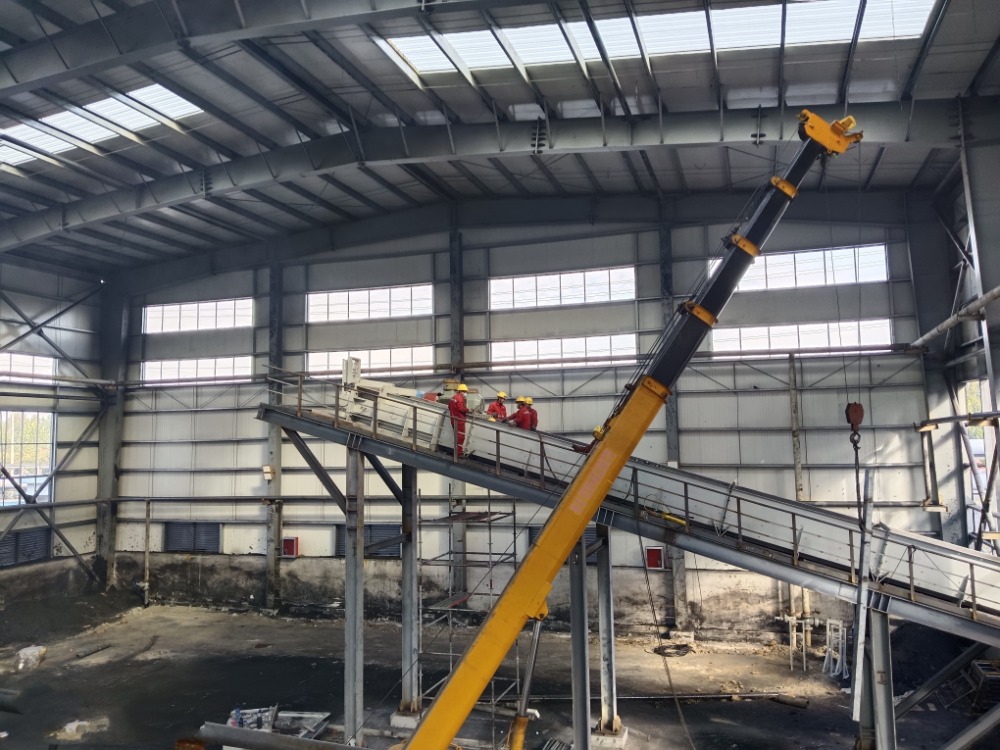Installation Site of the Buried Scraper Conveyor
Buried Scraper Conveyor
Installation Site of the Buried Scraper Conveyor Supplied in a Domestic Project.

Environmental problems are getting more and more serious, we must pay attention to this issue all the time. The buried scraper conveyor produced by our company is a environment-friendly equipment, which can realize enclosed transportation, particularly suitable to convey dusty, toxic, or explosive materials, also can improve working conditions. This equipment allows anual continuous operation without any pollution to the environment.

The buried scraper conveyor has the advantages of simple structure, small size, and light weight, is applicable to various type of material, such as powder (cement, flour), granular (grain, sand), small blocks (coal, gravel) or the material with properties of toxic, corrosive, high temperature (300-400), dusty, flammable, explosive and etc.
 O'zbek
O'zbek slovenský
slovenský Azərbaycan
Azərbaycan Қазақ
Қазақ Latine
Latine ລາວ
ລາວ български
български नेपाली
नेपाली فارسی
فارسی Javanese
Javanese Українська
Українська Lietuvos
Lietuvos Română
Română Slovenski
Slovenski پښتو
پښتو Punjabi
Punjabi Bosanski
Bosanski Malti
Malti Galego
Galego Afrikaans
Afrikaans Esperanto
Esperanto 简体中文
简体中文 Српски
Српски मराठी
मराठी Ελληνικά
Ελληνικά čeština
čeština Polski
Polski ไทย
ไทย Nederlands
Nederlands Italiano
Italiano Tiếng Việt
Tiếng Việt Deutsch
Deutsch français
français русский
русский Português
Português Español
Español 한국어
한국어 Svenska
Svenska Malay
Malay اردو
اردو norsk
norsk Indonesia
Indonesia عربى
عربى Gaeilge
Gaeilge Türk
Türk Pilipino
Pilipino हिन्दी
हिन्दी Dansk
Dansk বাংলা
বাংলা English
English


Plane Turning Belt Conveyor Factory Advancing Efficient Material Handling Solutions
As global industries seek smarter and more efficient ways to move materials, the role of a reliable Plane Turning Belt Conveyor Factory has become increasingly important. Plane turning belt conveyors are designed to change the conveying direction smoothly on a horizontal plane, reducing transfer points and improving overall system efficiency. As a professional manufacturer in this field, JULI continues to set high standards in design, production, and customized conveyor solutions.
Read MoreHow Pipe Conveyor Systems Work: A Modern Solution for Enclosed Bulk Material Transport
Pipe conveyor systems are gaining increasing attention in industries that require efficient, clean, and flexible bulk material handling. As environmental regulations tighten and operational efficiency becomes a priority, understanding pipe conveyor working principles helps explain why this technology is being widely adopted in mining, cement, power generation, ports, and chemical processing.
Read MorePrecise Delivery of Key Spare Parts Ensures Stable Operation of Industrial Lifting Equipment
Recently, a batch of key mechanical spare parts for industrial lifting equipment, including guide rollers, clamping rollers, and gears, has completed production inspection and is ready to be shipped to an industrial site in Algeria.
Read More